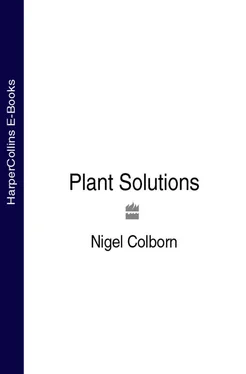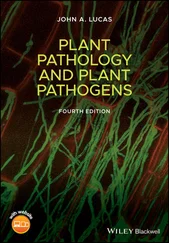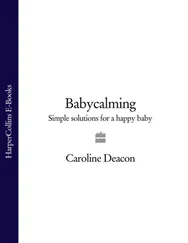1 ...7 8 9 11 12 13 ...29 The photograph represents a tiny moment, probably no more than a 60th of a second! The plant association needs to last for several weeks at least and preferably for months, and yet each poppy blooms for no more than a day. The display, however, is far less ephemeral than it looks. After flowering, the campanula would be cut hard back to promote a second flush of flowers. As the opium poppy loses the last of its petals, the shapely seed capsules, held on stiffening stems, will continue to provide an architectural outline. By the time the bellflower has re-grown and is blooming again, the spent poppy will shift in colour from glaucous green to beige, and hence will continue to provide a contrast.
Caution is needed with the poppy, as with many annuals, to prevent unnecessary spread of seed by destroying seedlings while still young. Poppies, among all annuals, are probably the most fecund, and their seeds have a staggeringly long period of viability, countable in decades rather than years!
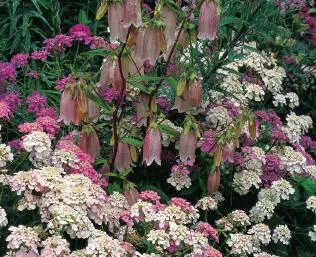
This group is spectacular for the present, but less successful as a lasting association. The candytuft (Iberis) makes a strong companion to the Korean perennial Campanula takesimana , picking up some of its tones but with cleaner, brighter colours and making a bright carpet. However, although it is slightly longer in flower than the poppy, it lacks an attractive aftermath and has undistinguished foliage.
Annuals for attracting beneficial insects
Clarkia pulchella
Hardy annual
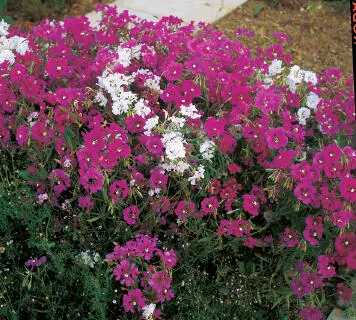
A pretty annual from the Rocky Mountains with thin stems furnished with attractively ruched, funnel-shaped flowers in soft hues of pink, mauve or rosy purple. Gardenworthy seed series include ‘Choice Double Mixed’ and ‘Apple Blossom’, whose flowers, being apricot with white touches, could hardly look less like apple blossom!
Soil preference:Any free-draining, reasonably fertile
Aspect:Sun
Season of interest:Summer
Height and spread:45cm × 30cm (18in × 12in)
Companion plants:Plants with an understated beauty, best placed with other pastel, crimson or purple annuals. Or use as gap fillers in a mixed or perennial border.
Euphorbia lathyrus
Caper Spurge Hardy annual
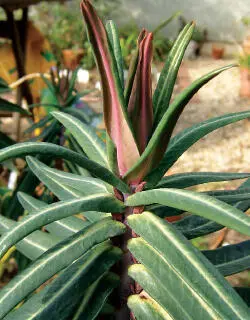
A member of the spurge family which produces an erect, single stem with leaves held opposite one another in pairs, forming an unusual cross pattern. The green flowers, despite resembling capers, are highly poisonous and attract many species of fly which, in turn, attract predators. If wounded, all parts of the plant exude a milky, irritant sap.
Soil preference:Any
Aspect:Any
Season of interest:Spring, summer
Height and spread:Up to 1.5m × 25cm (5ft × 10in)
Companion plants:Not a great beauty but effective as a foil for more colourful plants. Its erect stance makes a pleasing contrast with more pendulous shapes including arching grasses and phormiums.
Linaria maroccana
Morocco Toadflax Hardy annual
A pretty annual whose branching stems are furnished with simple, narrow leaves, which terminate with long-lasting spikes of small, spurred ‘snapdragon’ flowers. Colours are very variable in the wild species, with pink, yellow, dusky red, white or purple, each bloom usually having a deep yellow pollen guide. Garden varieties include ‘Fairy Bouquet’ in mixed colours, ‘Fantasy blue’ and ‘Northern Lights’, which has fragrant blooms.
Soil preference:Any free-draining
Aspect:Sun
Season of interest:Summer
Height and spread:20cm × 30cm (8in × 1ft)
Companion plants:A pretty annual to seed in a gravel garden, among low-growing grasses or to follow on from helianthemums and dwarf bearded irises.
Iberis umbellata
Candytuft Hardy annual
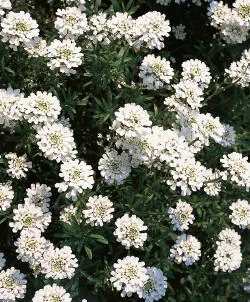
Often a child gardener’s first success, candytuft is an easily grown, quick-acting plant with simple leaves and branched stems which bear umbels of four-petalled, lilac, pink or white flowers. The outer petals on each umbel are larger than the inner, creating a lace-cap effect. Self sows freely in friable soil. Attractive to bees and butterflies.
Soil preference:Any
Aspect:Sun or part shade
Season of interest:Spring, summer
Height and spread:Up to 30cm × 15cm (12in × 6in)
Companion plants:Useful gap filler among the leaves of perennials which will flower later or naturalized in cottage style plantings with pinks, sweet Williams or other annuals.
Limnanthes douglasii
Poached Egg Plant Hardy annual
A remarkably versatile, wildlife-friendly, low energy plant. Produces a moisture-retaining dense carpet of vivid green vegetation and when the bright yellow and white flowers open, in late spring and early summer, they are irresistible to bees. Though annual, self-seeding will usually allow these plants to develop self-sustaining colonies.
Soil preference:Any, not too dry
Aspect:Sun or part shade
Season of interest:Spring, summer
Height and spread:15cm × 20cm (6in × 8in)
Companion plants:Useful to plant in front of shrubs, where they will make a bright carpet, or to scatter along the front of an annual border. Limnanthes also looks handsome grown among tuft-forming grasses such as Festuca glauca .
Calendula officinalis
Marigold, Pot Marigold Hardy annual
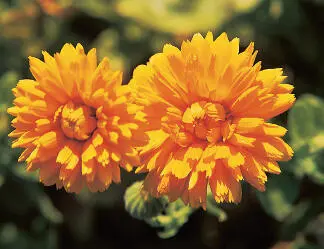
Familiar, aromatic annual with big daisy flowers, single or double, in the yellow and orange colour range. Modern series include the dwarf ‘Citrus Cocktail’ and taller ‘Touch of Red’, whose petals have dark edges. ‘Art Shades’ are tall, traditional marigolds with orange to yellow, fully double flowers. Prone to mildew in damp years.
Soil preference:Any free-draining and fertile
Aspect:Sun, partial shade
Season of interest:Summer, autumn
Height and spread:From 15–60cm × 45cm (6–24in × 18in)
Companion plants:The hot colours are excellent to contrast with blue larkspur and annual Convolvulus or to pep up a cottage border. Also good for creating a wild meadow effect with other hardy annuals and cornfield blooms.
Annuals for scent
Reseda odorata
Mignonette, Bastard Rocket Hardy annual
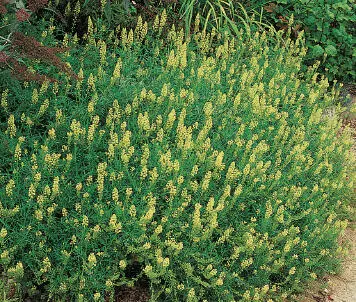
R. Coates
Читать дальше
